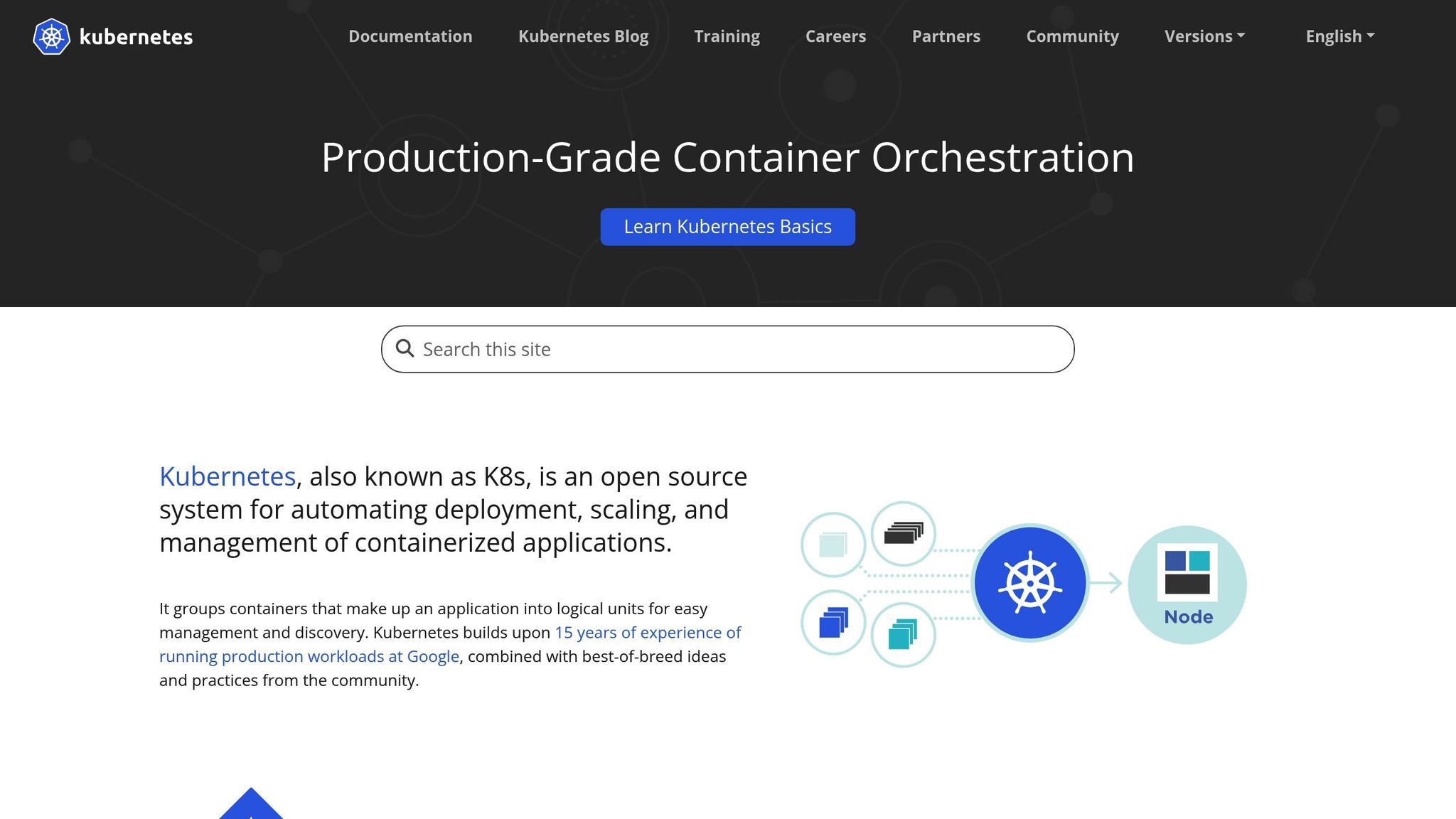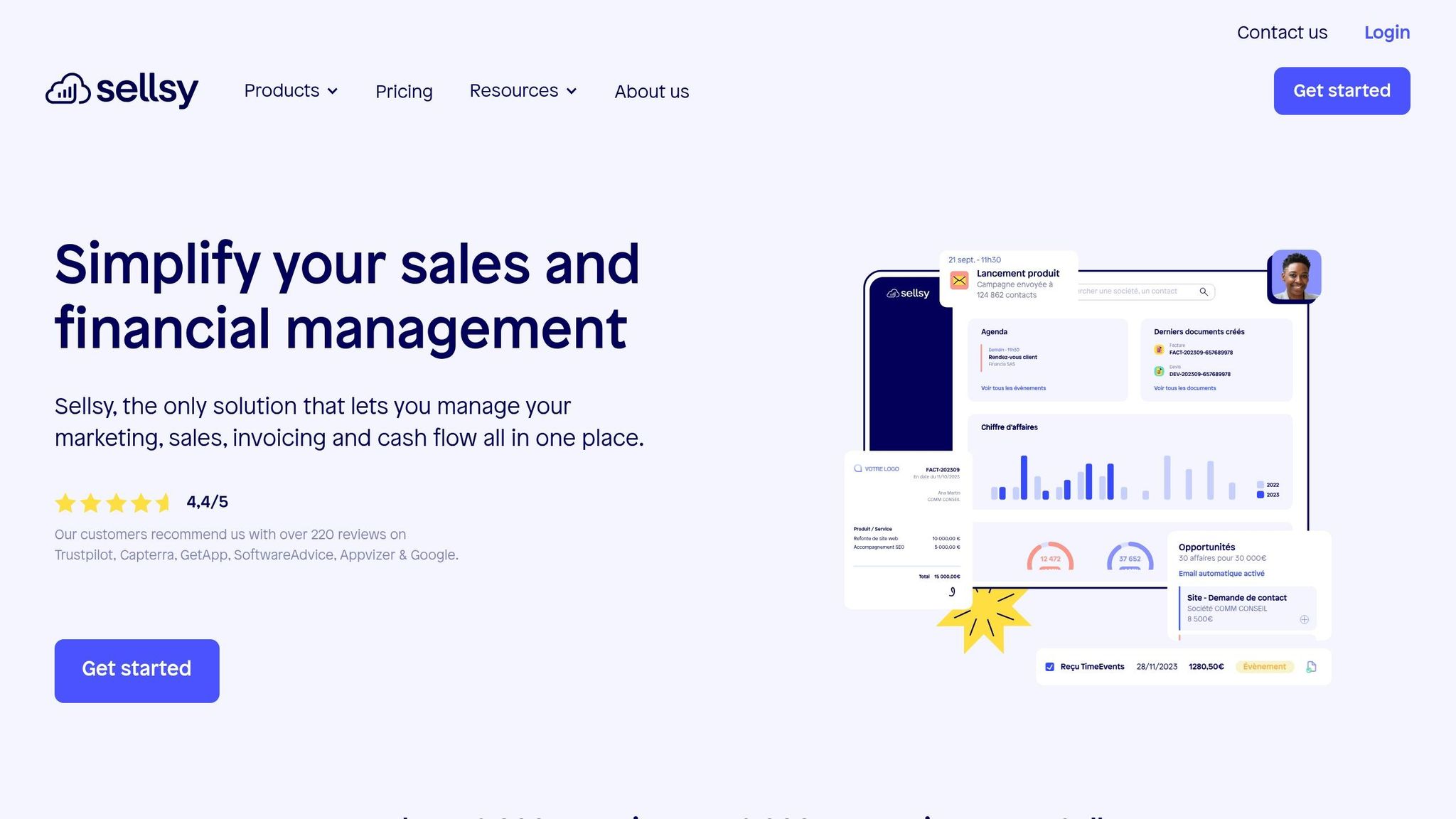Zero downtime rollback ensures businesses can revert to a stable system version without service interruptions. This approach protects revenue, reduces stress during deployments, and maintains customer trust. It relies on techniques like blue-green deployments, canary releases, and rolling updates, supported by automation, monitoring, and robust infrastructure.
Key Takeaways:
- Blue-Green Deployments: Instant rollback by switching traffic between duplicate environments, though costly.
- Canary Releases: Gradual rollout to a small user group, minimising risk.
- Rolling Updates: Incremental changes to individual servers, cost-effective but slower to revert.
Case studies from Sellsy and Sitecore highlight the importance of automated monitoring, feature flags, and post-rollback reviews. These methods prevented downtime during complex migrations and ensured quick recovery from issues. For UK businesses, aligning rollback strategies with regulatory requirements and investing in skilled DevOps teams can safeguard operations and enhance deployment processes.
Quick Comparison
| Strategy | Complexity | Risk Mitigation | Monthly Cost (£) | Rollback Speed | Best For |
|---|---|---|---|---|---|
| Automated Rollback | High | Excellent | £2,000–£8,000 | Seconds | High-traffic, critical systems |
| Blue-Green | Medium | Excellent | £5,000–£20,000 | Instant | Mission-critical apps |
| Canary Release | High | Very Good | £1,500–£6,000 | Minutes | Gradual rollouts |
| Rolling Update | Low | Good | £500–£2,000 | 5–15 minutes | Cost-conscious setups |
Zero downtime rollback eliminates deployment risks, ensuring continuous service and customer satisfaction. For tailored guidance, UK firms can seek expert advice to optimise their approach.
Nicolas Frankel - Zero-downtime deployment with Kubernetes, Spring Boot and Flyway

Core Rollback Mechanisms for Zero Downtime
Achieving zero downtime during rollbacks requires deployment strategies that can reverse problematic changes without interrupting live services. These methods focus on keeping systems operational while addressing issues, laying the groundwork for smooth and efficient rollback processes.
Key Techniques: Blue-Green Deployments, Canary Releases, and Rolling Updates
Blue-green deployments are one of the most straightforward ways to ensure zero downtime rollback. This approach involves maintaining two identical production environments: one active (green) and one on standby (blue). Updates are applied to the standby environment, and traffic is switched to it using a load balancer. If any issues arise, traffic can be quickly redirected back to the original environment.
This method offers near-instant rollback capabilities but comes with the trade-off of higher infrastructure costs, as it requires maintaining duplicate environments - something that can significantly impact budgets, especially for large-scale applications.
Canary releases take a more gradual path. Borrowing their name from the canaries used in coal mines to detect danger, this strategy rolls out new changes to a small subset of users first. Teams monitor performance and key metrics during this limited release, gradually expanding the rollout if no issues are detected. If problems occur, the rollout can be paused, and traffic is redirected back to the stable version.
Rolling updates replace the old version of an application incrementally, one instance at a time. Commonly used in containerised systems like Kubernetes, this method ensures that each updated instance passes health checks before moving on to the next. If something goes wrong, the process can be stopped, and affected instances reverted to the previous version.
While rolling updates are more resource-efficient since they don’t require duplicate infrastructure, they introduce additional complexity. Reverting a partially completed update demands careful coordination to avoid disruptions.
Requirements for Effective Rollback
To support these rollback strategies, robust infrastructure and processes are essential.
- Automated testing is critical. Comprehensive test suites should quickly validate the system’s functionality after a rollback, covering everything from performance to integration and core features.
- Monitoring and observability tools provide real-time insights into system performance, error rates, and user experience. Automated alerts tied to predefined thresholds can trigger rollback actions. Beyond technical metrics, tracking business indicators like conversion rates can uncover issues that might otherwise go unnoticed.
- Database compatibility is a common challenge. Schema changes must be backward compatible, often requiring separate deployments or feature flags to ensure a seamless transition.
- Load balancing and traffic management systems play a major role. Modern load balancers should support dynamic routing, weighted traffic shifts, and health checks to remove problematic instances during a rollback.
- Configuration management systems with version control are vital. These systems allow teams to revert not only code changes but also configuration updates, such as environment variables or feature flags.
Finally, team coordination and communication are crucial. Clear escalation paths, defined rollback criteria, and rehearsed incident response plans can make the difference between a minor inconvenience and a significant outage.
While these requirements might seem extensive, they form the foundation of reliable deployment practices. Organisations that prioritise these capabilities not only achieve zero downtime rollbacks but also enhance overall system stability and deployment efficiency. For UK businesses, experts like Hokstad Consulting can provide tailored advice to optimise DevOps workflows and cloud infrastructure.
Case Study: Sellsy's Zero Downtime Migration

Sellsy, a French customer relationship management platform, successfully migrated its core Elasticsearch cluster without causing any disruptions to its active users. Facing performance bottlenecks in its legacy system, the company decided on a complete architectural overhaul. The challenge? Ensuring the migration process didn’t interrupt customer operations or impact revenue.
To achieve this, the team adopted a phased rollout using feature flags. This method allowed Sellsy to maintain seamless service during one of its most intricate infrastructure upgrades.
Rollback Approach and Implementation
Sellsy tackled the migration challenge with a carefully designed rollback process. At the heart of this strategy were feature flags, which acted as a dynamic control mechanism. These flags enabled the team to reroute specific functionalities between the old and new clusters in real time.
During the migration, both the legacy and new clusters operated simultaneously, with continuous data synchronisation to ensure consistency. This dual-cluster setup provided an immediate fallback option in case of any issues.
Feature flags were implemented at multiple levels, offering granular control. For instance, user-specific and functionality-level flags allowed selective migration, while automated monitoring systems were primed to trigger immediate rollbacks if problems were detected. This meant that if a particular feature encountered issues, only that component would revert to the legacy system, leaving the rest of the migration process unaffected.
The phased rollout gradually expanded the number of migrated users, minimising risks. Automated monitoring closely tracked key metrics like response times and error rates at each stage. If performance dipped below acceptable thresholds, the system automatically initiated a rollback for the affected segment within seconds, ensuring minimal service disruption.
When a rollback occurred, feature flags instantly redirected traffic back to the legacy cluster, allowing database queries and search operations to continue without interruption. This level of control and precision ensured that the migration adhered to the zero downtime goal.
Impact on Operations and Financials
Sellsy’s zero downtime migration brought substantial operational and financial gains. By avoiding prolonged downtime, the company prevented potential revenue losses and ensured customers could maintain their productivity throughout the process.
Only a few minor rollback events occurred during the migration, each managed swiftly and limited to a small group of users. Unlike previous migrations that required extended downtime, this approach preserved revenue streams and significantly reduced stress on the engineering team.
Customer satisfaction remained strong, with stable performance ratings and fewer support tickets related to system issues. While running dual infrastructures temporarily increased costs, the long-term savings from improved system performance and lower hosting expenses more than compensated for these short-term expenses.
Case Study: Sitecore Platform Rollback and Recovery

Sitecore, a leading provider of digital experience platforms, encountered deployment challenges with its cloud-based CMS. Even minor issues could lead to service disruptions, making uninterrupted service a top priority. To address this, Sitecore adopted a fast and automated rollback strategy, crucial for ensuring continuous service availability without manual intervention.
Automated Rollback Process
Sitecore implemented an automated rollback system designed to respond immediately when problems were detected. The process was built around constant monitoring of key performance metrics. If those metrics exceeded predefined thresholds, the system would instantly revert to a stable version, ensuring services remained operational.
A critical feature of this system was its ability to quickly switch between versions. This ensured that even during complex multi-service deployments, rollbacks could occur without causing downtime.
This automation also paved the way for thorough post-rollback evaluations.
Post-Rollback Analysis and Lessons Learned
After each rollback, Sitecore conducted detailed reviews to understand the failure timeline, identify affected components, and evaluate overall system performance.
One major takeaway from these reviews was the need to improve monitoring practices. Initially, checks were limited to basic connectivity and response codes. Over time, these evolved into more comprehensive performance tracking systems. By broadening the range of monitored indicators, Sitecore's system became better at distinguishing between temporary glitches and serious issues requiring rollback.
Another improvement came from automated log aggregation. By combining logs from various sources, the team could uncover underlying problems that might have been overlooked when examining logs individually. This enhanced understanding of system behaviour not only improved the rollback process but also helped refine performance baselines and thresholds for future rollbacks.
Clear communication with stakeholders was equally important. Even though the automated rollback system ensured uninterrupted service, promptly notifying clients about rollback events helped build trust. These updates reassured enterprise clients of the platform's reliability and resilience.
Sitecore's approach demonstrates the importance of pairing automated rollback systems with in-depth post-incident reviews. This combination creates a data-driven process that identifies potential risks in high-stakes deployments and continually enhances system reliability.
Need help optimizing your cloud costs?
Get expert advice on how to reduce your cloud expenses without sacrificing performance.
Rollback Strategy Comparison
Selecting the right rollback strategy depends on your organisation's needs, technical setup, and how much risk you're willing to accept. Each approach has its own strengths and trade-offs, making it better suited for particular scenarios. Here's an overview of the main strategies and what they bring to the table.
Automated rollback systems are ideal for environments where quick reactions are crucial. These systems monitor performance metrics in real time and automatically trigger a rollback if something goes wrong. The biggest advantage? Speed. Rollbacks can happen within seconds, often before users even notice an issue. However, setting this up requires advanced monitoring tools and careful configuration to avoid unnecessary rollbacks caused by false alarms.
Blue-green deployments offer a high level of reliability by maintaining two identical environments. When a new version is ready, traffic is switched entirely from the old environment to the new one. This ensures minimal disruption but comes with a higher price tag, as you're essentially doubling your production infrastructure.
Canary releases take a more gradual approach. A small portion of users is directed to the new version while the majority continue using the stable one. This lets teams catch and address issues with minimal impact before rolling the update out to everyone. Companies like large digital platforms often rely on this method, scaling up traffic to the new version only after positive performance and feedback.
Rolling updates work by deploying changes incrementally, replacing older versions one server at a time. While this method doesn’t require significant extra infrastructure, it does mean slower rollback times, as each server must be reverted individually. Below is a breakdown of these strategies to help compare their strengths and weaknesses.
Comparison Table of Rollback Strategies
| Strategy | Complexity | Risk Mitigation | Infrastructure Cost (Monthly) | Rollback Speed | Best Suited For |
|---|---|---|---|---|---|
| Automated Rollback | High | Excellent | £2,000–£8,000 | Seconds | High-traffic applications needing fast fixes |
| Blue-Green | Medium | Excellent | £5,000–£20,000 | Instant | Mission-critical systems with flexible budgets |
| Canary Release | High | Very Good | £1,500–£6,000 | Minutes | Apps with diverse user traffic |
| Rolling Update | Low | Good | £500–£2,000 | 5–15 minutes | Cost-conscious deployments with some tolerance for interruptions |
These cost estimates are based on medium-scale applications and take into account factors such as monitoring tools, extra servers, and load balancing. Actual expenses can vary depending on the cloud provider, location, and specific technical needs.
Each of these strategies requires precise monitoring and skilled configuration. Automated rollbacks, for instance, demand DevOps engineers experienced in setting up monitoring and alerts. Blue-green deployments benefit from strong automation skills, while canary releases require expertise in analysing rollout data and interpreting metrics to make informed decisions.
The choice often boils down to balancing risk, complexity, and cost. For organisations dealing with financial transactions or sensitive healthcare data, automated rollbacks or blue-green deployments might be the safest bets. Meanwhile, e-commerce platforms during busy periods may lean towards canary releases to balance reliability and cost. Smaller-scale apps or internal tools might find rolling updates sufficient for their needs.
For UK businesses looking to minimise downtime, tailored strategies are key. Expert advice from firms like Hokstad Consulting can help fine-tune your approach, ensuring your rollback strategy aligns with both operational goals and budget constraints. From optimising DevOps workflows to managing cloud infrastructure, these specialists can provide the guidance needed to make rollbacks as seamless as possible.
Best Practices and Lessons Learned
Drawing insights from the Sellsy and Sitecore examples, certain practices consistently emerge as key to successful zero downtime rollbacks. These lessons can help businesses improve deployment reliability while reducing operational risks.
Common Themes Across Case Studies
Monitoring and automation are essential pillars of effective rollback strategies. Both Sellsy and Sitecore utilised real-time monitoring tools to track critical system and business metrics. By implementing automated systems with predefined rollback triggers, they ensured faster responses and minimised disruptions.
Regular rollback drills make a difference. Teams that only tested their rollback processes during actual incidents often faced unexpected issues at critical moments. Conducting regular drills - especially during low-traffic periods - helps identify and address weaknesses before they become major problems.
Incremental deployment approaches outperform traditional methods. Strategies like canary releases, blue-green deployments, and rolling updates limit the scope of potential issues during rollouts. This approach not only reduces disruption but also allows for quicker, more controlled rollbacks when needed.
Post-rollback reviews set mature organisations apart. Teams that consistently perform detailed post-mortems after rollback events - whether caused by real issues or false alarms - gain valuable insights. These reviews help refine processes and reduce the risk of future incidents.
These recurring patterns provide a strong foundation for actionable advice tailored to UK organisations.
Recommendations for UK-Based Organisations
UK businesses face specific challenges when adopting zero downtime rollback strategies, but these can also present opportunities for improvement.
Leverage regulatory requirements to strengthen processes. UK regulations often demand robust audit trails and change management practices. Rather than seeing these as hurdles, organisations can use them to enhance their rollback capabilities.
Allocate budgets wisely. System downtime can be costly, so investing in reliable rollback infrastructure is a sound decision. The cost of prevention is far lower than the expense of prolonged outages.
Invest in skills development. Recruiting DevOps engineers with advanced rollback expertise can be tough in the competitive UK job market. Collaborating with specialists like Hokstad Consulting can help bridge this gap while building in-house knowledge over time.
Start small and scale gradually. Focus rollback investments on high-priority applications first, rather than attempting a full-scale implementation across the organisation. This targeted approach reduces risk and builds confidence for broader adoption.
Integrate rollbacks into existing DevOps pipelines. Many UK organisations have embedded rollback triggers directly into their continuous integration and deployment workflows. This makes rollbacks a seamless part of the development process, rather than an emergency measure.
Consider multi-region deployments for critical systems. As UK companies increasingly cater to global audiences, rollback strategies should account for geographically distributed traffic. Multi-region setups enhance rollback speed and resilience against localised issues.
Establish clear communication protocols. During rollback events, keeping stakeholders informed is often overlooked. Standardised communication templates and automated notifications can ensure that all relevant parties are updated promptly and appropriately.
These recommendations align with the broader zero downtime rollback strategies discussed earlier, offering UK organisations a practical roadmap to enhance their deployment processes.
Conclusion: Achieving Zero Downtime Rollback
Zero downtime rollback has become a crucial element for businesses aiming to maintain uninterrupted operations. Examples like Sellsy's seamless migration and Sitecore's automated recovery processes highlight how careful planning, effective automation, and tailored strategies can prevent the disruptions often associated with traditional deployment methods. These lessons fit neatly into the broader conversation about improving deployment efficiency.
Automation is the cornerstone of success - manual interventions lead to delays and errors. Companies that achieved genuine zero downtime invested in automated monitoring systems with predefined triggers, enabling rollbacks to happen in seconds rather than dragging on for minutes or hours.
Preparation is everything. Rigorous testing, clear communication protocols, and readiness to handle multiple failure scenarios proved invaluable during real-world incidents. These measures ensured that rollbacks were not just reactive but proactive and efficient.
In the UK, businesses must navigate the dual challenge of adhering to regulatory requirements while maintaining operational efficiency. UK regulations, with their focus on strict audits and change management, can actually be leveraged to strengthen rollback processes. Rather than seeing compliance as a hurdle, forward-thinking organisations use it as an opportunity to enhance their deployment capabilities.
The financial case for zero downtime rollback is clear. The cost of investing in robust rollback infrastructure pales in comparison to the potential losses from downtime, which can reach millions of pounds. Beyond financial savings, the benefits include happier customers, reduced stress on operations teams, and a stronger competitive edge.
For success, rollback mechanisms must be embedded into the development process from the start, not treated as an afterthought. The most effective implementations integrate these capabilities into continuous integration pipelines, making rollback a seamless part of daily operations rather than an emergency measure.
Expert guidance can make all the difference. Partnering with specialists like Hokstad Consulting can speed up implementation and build internal expertise. Combining external advice with internal development ensures rollback strategies remain adaptable to evolving business and technological needs. The experiences of Sellsy and Sitecore demonstrate how this approach can transform risky rollbacks into routine, dependable processes.
Zero downtime rollback shifts deployment from being a high-stakes gamble to a predictable, secure operation that supports business growth instead of jeopardising it.
FAQs
What are the benefits and challenges of using blue-green deployments for instant rollbacks?
Blue-green deployments offer a straightforward way to handle instant rollbacks. By having two nearly identical environments - one active ('blue') and one prepared for deployment ('green') - teams can quickly switch traffic back to the stable setup if something goes wrong. This approach helps keep downtime and service interruptions to a minimum.
That said, running two parallel environments can lead to a noticeable rise in infrastructure costs, essentially doubling resource requirements. Organisations need to carefully balance the benefit of quick rollbacks against these additional expenses, ensuring the strategy fits both their operational needs and financial limits.
What should I consider when deciding between canary releases and rolling updates for achieving zero downtime?
When choosing between canary releases and rolling updates to achieve zero downtime, it all comes down to understanding your application's risk tolerance and deployment priorities.
If reducing risk is your main concern, canary releases might be the way to go. This method introduces changes to a small group of users first, giving you the chance to spot and fix any issues before the update reaches everyone. It offers a more controlled and cautious approach to deployments. On the flip side, rolling updates focus on automating the process, rolling out changes incrementally across your system. This makes them a great choice for stable applications where efficiency and simplicity are more important.
Both approaches aim to keep users happy with uninterrupted service, but the best option will depend on your goals and how complex your deployment setup is.
How can UK businesses implement zero downtime rollback strategies that meet regulatory requirements while maintaining efficiency?
To carry out zero downtime rollback strategies while meeting UK regulations, businesses should embed compliance checks directly into their CI/CD pipelines and cloud migration workflows. Automating tasks such as schema migrations helps reduce the chance of errors and keeps operations running smoothly.
Adhering to operational resilience regulations like PS21/3 is equally critical. These regulations emphasise strong risk management and exit strategies during cloud transitions. Secure rollback methods, including cryptographic agility and proactive vulnerability management, can further ensure compliance and minimise risks during updates or migrations.
By focusing on both compliance and operational needs, businesses can upgrade systems efficiently without sacrificing regulatory requirements or performance standards.
